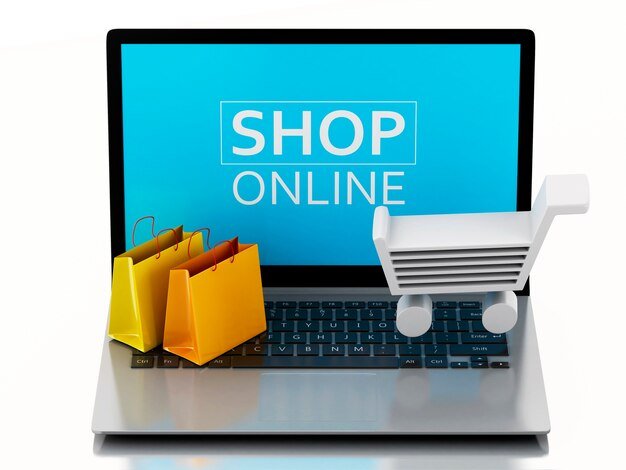If you’re a small business owner in Ireland and you haven’t yet stepped into the e-commerce world, let me say this: you’re leaving money on the table. Customers today are shopping online more than ever, whether it’s for artisan products, local services, or those irresistible Irish handmade goods. An e-commerce website isn’t just a “nice to have” anymore—it’s a lifeline for staying competitive. So, let’s talk about how to create a website that doesn’t just exist but thrives. Here’s your friendly guide, full of tips to help you make your mark online.
Set Clear Goals for Your Ecommerce Website
Before jumping in, take a step back. What do you actually want from your e-commerce website? Is it all about increasing sales, building brand recognition, or reaching people beyond your local area? Pin down your goals early, and they’ll act as your compass throughout this process.
Know your audience:
Think about who your typical customer is. Are they busy parents looking for convenience? Trend-savvy teens? Or maybe local shoppers who love supporting small businesses? When you know who you’re talking to, it’s easier to tailor your website to their needs.
Define your success metrics:
Set specific, measurable goals—like boosting website traffic by 20% in six months or doubling online orders within a year. Clear targets keep you motivated and make your progress easy to track.
Choose the Right E-commerce Platform
Picking an ecommerce platform can feel overwhelming with all the choices out there. But don’t worry—it’s simpler than it seems. Think of your platform as the foundation of your online store. Choose wisely, and it’ll save you a ton of headaches later.
Popular platforms to consider:
- Shopify: User-friendly, packed with features, and great for beginners.
- WooCommerce: Perfect if you’re already on WordPress and want flexibility.
- BigCommerce: Scalable and ideal if you’re planning for rapid growth.
Key factors to weigh:
- Is it easy to use?
- Can it grow with your business?
- What’s the cost for subscriptions, plugins, and add-ons?
You don’t need to spend a fortune, but make sure the platform you choose fits your current and future needs.

Invest in a Responsive Design
Here’s the thing: most people will visit your site on their phones. And if your website isn’t mobile-friendly, you’re basically turning customers away. A responsive design ensures your site looks great and works smoothly on any device.
Why it matters:
- Mobile shoppers dominate the e-commerce landscape.
- A seamless experience builds trust and keeps users coming back.
- Google ranks mobile-friendly sites higher in search results.
So, test your site on multiple devices and make adjustments as needed. Trust me, it’s worth the effort.
Focus on User-Friendly Navigation
Think of your e-commerce website as a store. If it’s hard to find what you’re looking for, you’re probably walking out empty-handed, right? The same goes for your online store. Easy navigation is key to keeping customers engaged.
Tips for better navigation:
- Keep menus simple and intuitive.
- Organize products into logical categories.
- Include a search bar so users can quickly find what they need.
A well-organized site isn’t just functional—it makes shopping enjoyable. And happy shoppers tend to buy more!
Optimize for Local SEO in Ireland
Here’s a game-changer: local SEO. If you’re targeting customers in Dublin or anywhere else in Ireland, local SEO helps put your website in front of them when they’re searching for products or services you offer.
How to make it happen:
- Use Ireland-specific keywords, like “handmade gifts in Dublin” or “local Irish food delivery.”
- Mention your business location on your site.
- Claim your Google My Business profile and keep it updated.
With the right SEO strategy, you can attract more local customers without breaking the bank.
![]()
Secure Your Ecommerce Website
If your site doesn’t feel secure, your customers will hesitate to shop with you. And honestly, who can blame them? Make security a priority—it’s as much about protecting your business as it is about reassuring your customers.
What you need:
- An SSL certificate to encrypt data.
- Secure payment gateways like Stripe or PayPal.
- Regular updates to your platform and plugins.
These small steps go a long way in earning customer trust. Plus, a secure site helps you sleep better at night, knowing your business and customers are protected.
Prioritize High-Quality Product Images and Descriptions
Your products are the stars of your website, so make them shine. Crisp, clear images and engaging descriptions can make or break a sale.
Image tips:
- Use high-quality photos taken in good lighting.
- Show your products from multiple angles.
- Add a zoom feature so customers can see details up close.
For descriptions:
- Focus on benefits, not just features.
- Keep it simple but compelling.
- Address common customer questions right in the product details.
A great photo and a relatable description can turn a casual browser into a paying customer.
Enable Easy Checkout Processes
Picture this: a customer loves your product, adds it to their cart, and then gets stuck in a clunky checkout process. What happens? They leave. Don’t let that happen.
Simplify your checkout:
- Offer a guest checkout option (not everyone wants to create an account).
- Minimize the steps to complete a purchase.
- Include multiple payment methods for flexibility.
Keep it quick and hassle-free, and you’ll see fewer abandoned carts.
Leverage Social Media for Promotion
Social media isn’t just for selfies and memes—it’s a goldmine for e-commerce businesses. Platforms like Instagram and Facebook are great for showcasing your products and connecting with potential customers.
How to use social media effectively:
- Share behind-the-scenes content to humanize your brand.
- Run promotions or flash sales to spark interest.
- Use paid ads to reach a broader audience.
Social media is your chance to build relationships with customers and keep your brand top of mind.

Monitor Performance and Make Improvements
Once your website is live, the work isn’t over. Monitor its performance regularly and look for ways to improve.
Track these metrics:
- Traffic: Are people finding your site?
- Bounce rate: Are visitors leaving too quickly?
- Conversion rate: Are visitors turning into buyers?
Gather data using tools like Google Analytics and tweak things as needed. Even small changes can lead to big results over time.
Conclusion: Build Your Ecommerce Success in Ireland
Creating an e-commerce website might feel like a big task, but it’s absolutely worth it. By focusing on clear goals, great design, and a seamless shopping experience, you’ll set yourself up for success. Remember, your website isn’t just a place to sell—it’s a reflection of your brand and a tool to connect with customers.
Need expert guidance? Elites Algorithm specializes in building e-commerce solutions tailored to small businesses in Ireland. Let’s bring your vision to life and help your business thrive online.
FAQs
Why is responsive design important for my e-commerce site?
Responsive design ensures your site works well on any device, improving user experience and boosting sales. Elites Algorithm can help you create a mobile-friendly site that your customers will love.
How can I improve local SEO for my e-commerce business in Ireland?
Use Ireland-specific keywords, claim your Google My Business profile, and mention your location on your site. Local SEO helps you reach customers nearby.
What’s the best e-commerce platform for small businesses?
Shopify and WooCommerce are excellent choices. They’re user-friendly and versatile, making them great options for beginners and growing businesses.
How can I make my checkout process easier for customers?
Offer guest checkout, reduce steps in the process, and include multiple payment options. A smoother checkout keeps customers from abandoning their carts.
Do I need professional help to build my e-commerce site?
It’s not mandatory, but professional help ensures a polished, high-performing website. Elites Algorithm specializes in creating tailored e-commerce solutions for small businesses in Ireland.




